Sugo is the Italian word for “sauce” and is a tomato-based sauce recipe used for topping pasta. This sugo di pomodoro recipe is the authentic version of this classic Italian dish. Made with just a few ingredients!
REVIEW: Thank you for this recipe, it worked out perfectly – and I have also tried it with little additions such as olives or capers, whatever I’ve had extra on hand (or craving…)
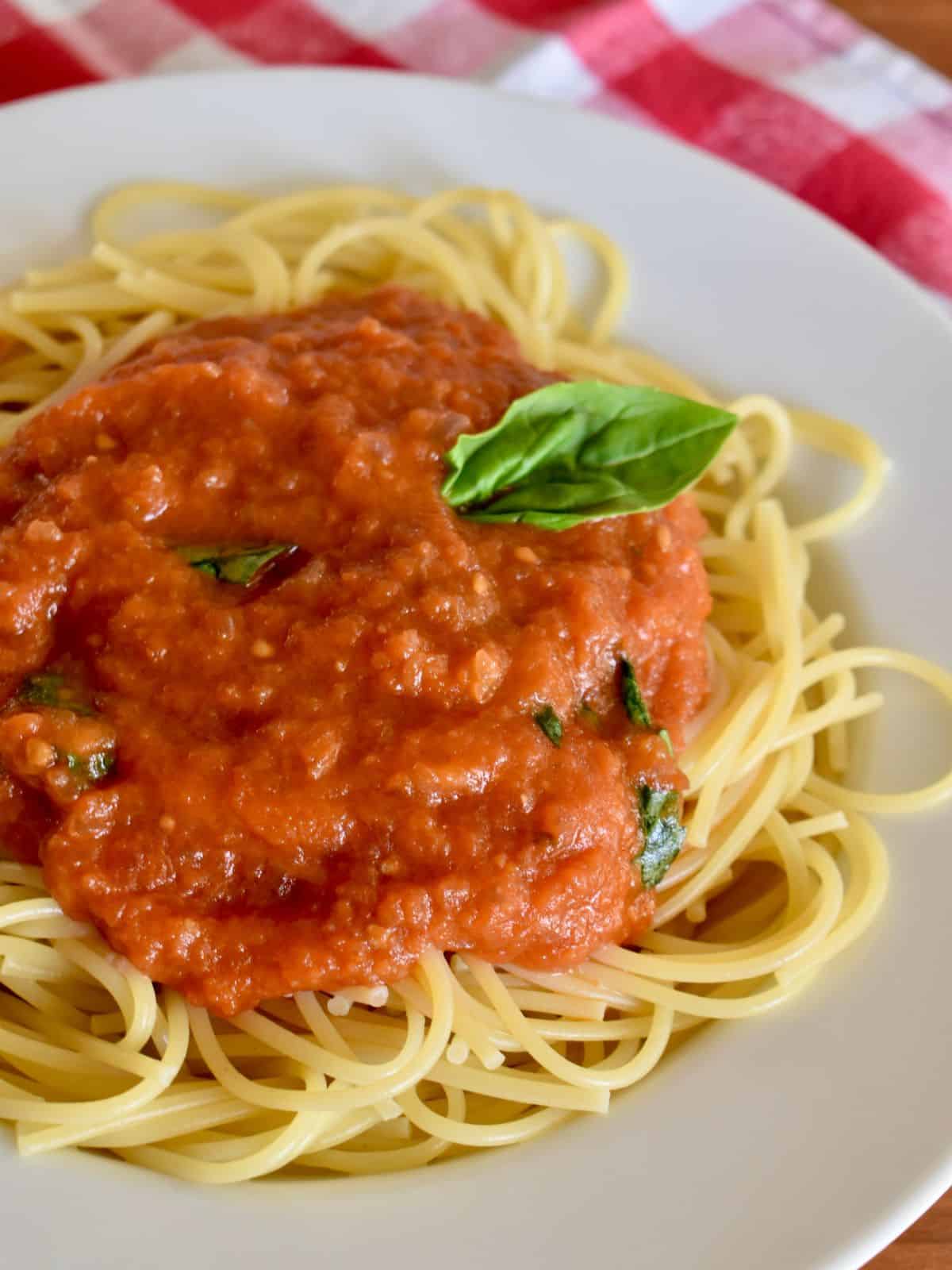
True Italians know that the key to a good red sauce is the quality of the ingredients. This recipe for Sugo is no exception and really showcases how a few simple ingredients can make a delicious pasta sauce.
This is a great recipe to have on hand and simple enough for every skill level. Serve it over a bowl of hot pasta, Ricotta Gnocchi, or use it in recipes like this Eggplant Parmesan Sandwich, Authentic Italian Braciole, or Italian Stromboli recipe.
You could even add it to baked pastas like this Authentic Italian Mostaccioli recipe or with this Italian Crepes! For an authentic Italian spicy pasta, don’t miss this Nduja Pasta recipe.
Why You Need to Make this Sugo Recipe!
Sugo di pomodoro is a classic Italian red sauce recipe that really focuses on the flavors of the tomatoes. The dish cooks low and slow to concentrate the tomato flavor and pairs perfectly with pasta.
While you may want to compare this sauce with marinara sauce, it is not the same. Marinara sauce is made with tomatoes, basil, oregano, garlic, and sometimes other ingredients like anchovies or capers.
Traditional sugo is made with just a few ingredients. You will not find many spices, or even minced garlic, in traditional versions of this recipe.
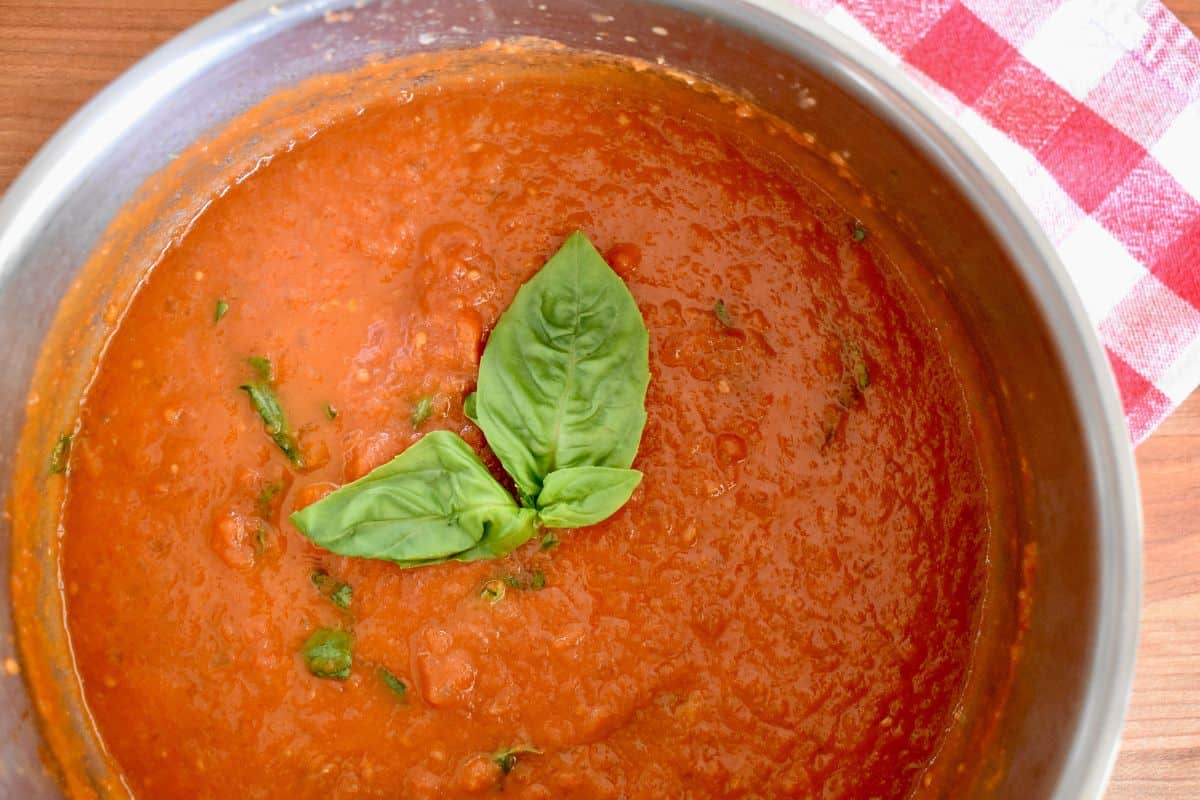
This recipe can be made using fresh tomatoes or passata. However, I prefer to use canned San Marzano tomatoes. Be sure to buy the authentic San Marzano canned tomatoes at the grocery store.
If you are a true lover of classic tomato-based sauces, you need to try this Sugo recipe. It comes together quick and is sure to impress even your Italian friends.
Sugo is a great recipe to make ahead and have on hand. You can easily double or triple this recipe with great results.
Use this sauce as you would any traditional red sauce. It’s delicious over a top of hot pasta or as a dipping sauce for crusty bread.
Ingredients
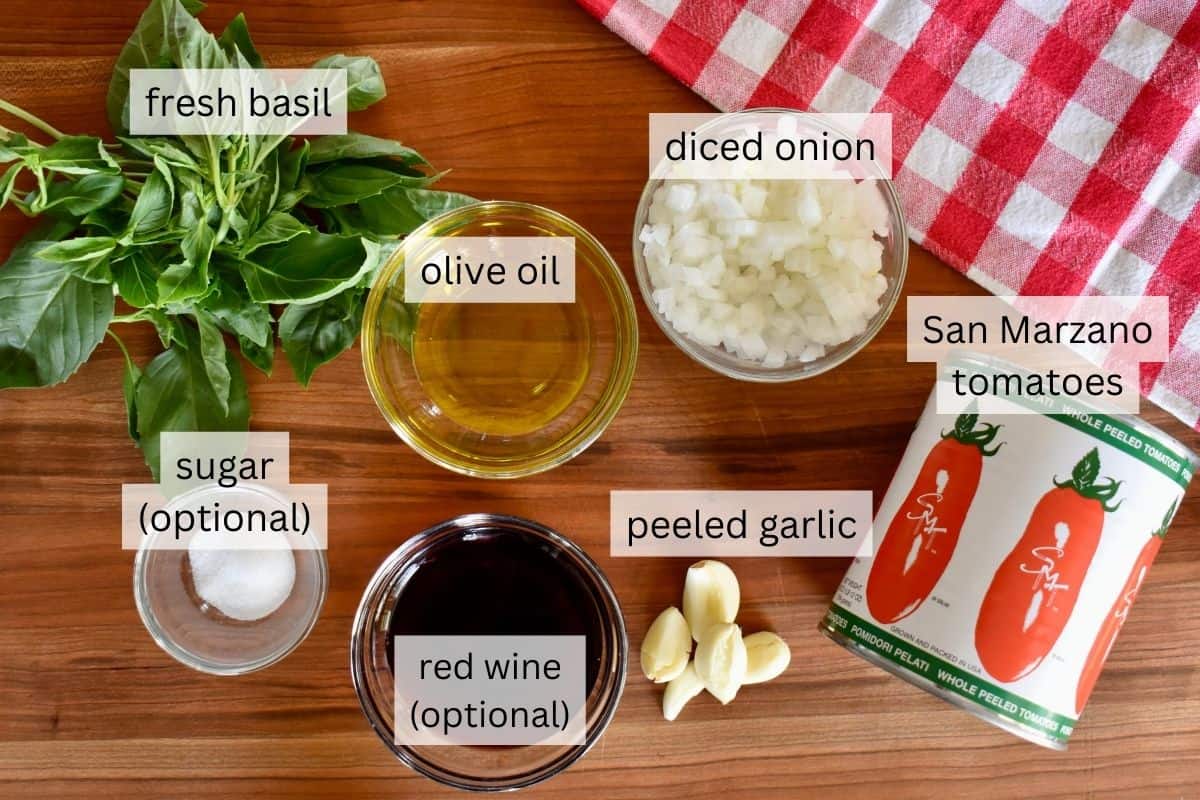
- Olive oil: use a good quality olive oil here, extra virgin olive oil if you have it.
- Onion: a small yellow or white onion is preferable.
- Garlic: note that you are not using minced garlic or keeping the garlic in the sauce. You will need to use fresh whole cloves of garlic and then remove them at the end of cooking.
- Tomatoes: you will need to use authentic San Marzano tomatoes to get the best results.
- Red wine: cooking the tomatoes with a bit of red wine will help to intensify the flavors of the sauce. This is optional.
- Fresh basil leaves: you can just tear the leaves or slice them in the sauce.
- Kosher salt: add salt to taste.
- Sugar: this is an optional ingredient, however it’s how my Nonna always finished her sauces and helps to tamper the acidity of the tomatoes.
How to Make Sugo?
Also know as sugo di pomodoro (tomato sauce) this recipe is so much more than traditional marinara.
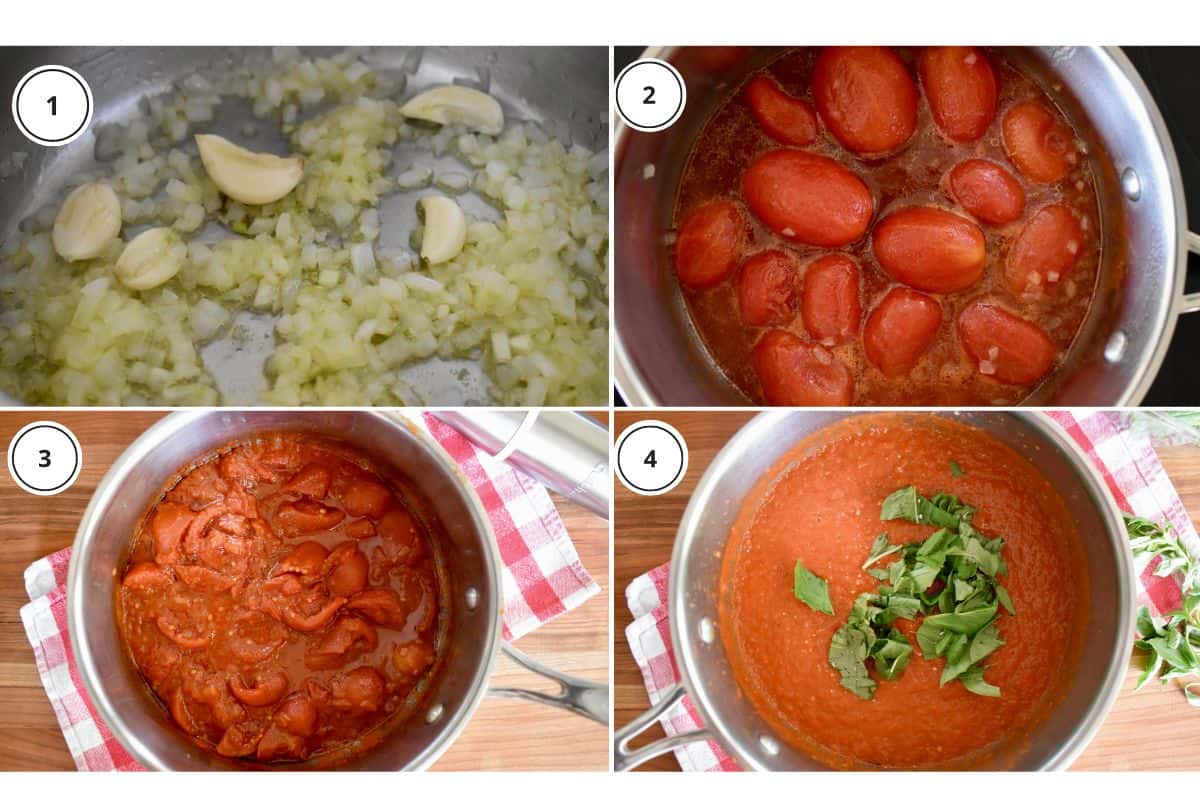
Step 1: cook the onions and garlic
In a saucepan, heat the olive oil over medium heat. Add in the diced onions and cook until they start to soften, about 3-4 minutes.
During the last few minutes of cooking the onions, add in the smashed garlic. Remove the garlic after 2-3 minutes.
Step 2: cook the tomatoes
Add in the can of San Marzano tomatoes and red wine, if using. Bring to a low simmer and cover. Cook for 20 minutes covered, then remove lid and add sugar, if using. Let the sugo simmer for another 30-40 minutes to thicken while crushing the tomatoes with a spoon or cutting with kitchen shears.
Step 3: simmer and reduce
Let the sugo simmer for another 30-40 minutes to thicken while crushing the tomatoes with a spoon or cutting with kitchen shears. You will know the sauce is ready when the mixture turns a deep red and some of the liquid has evaporated.
Step 4: blend and add in the basil
Next, puree the sauce slightly to get rid of the larger chunks of tomatoes. An immersion blender is great for this.
Lastly, add in the torn pieces of basil and taste the sauce for seasonings. Add in kosher salt if needed.
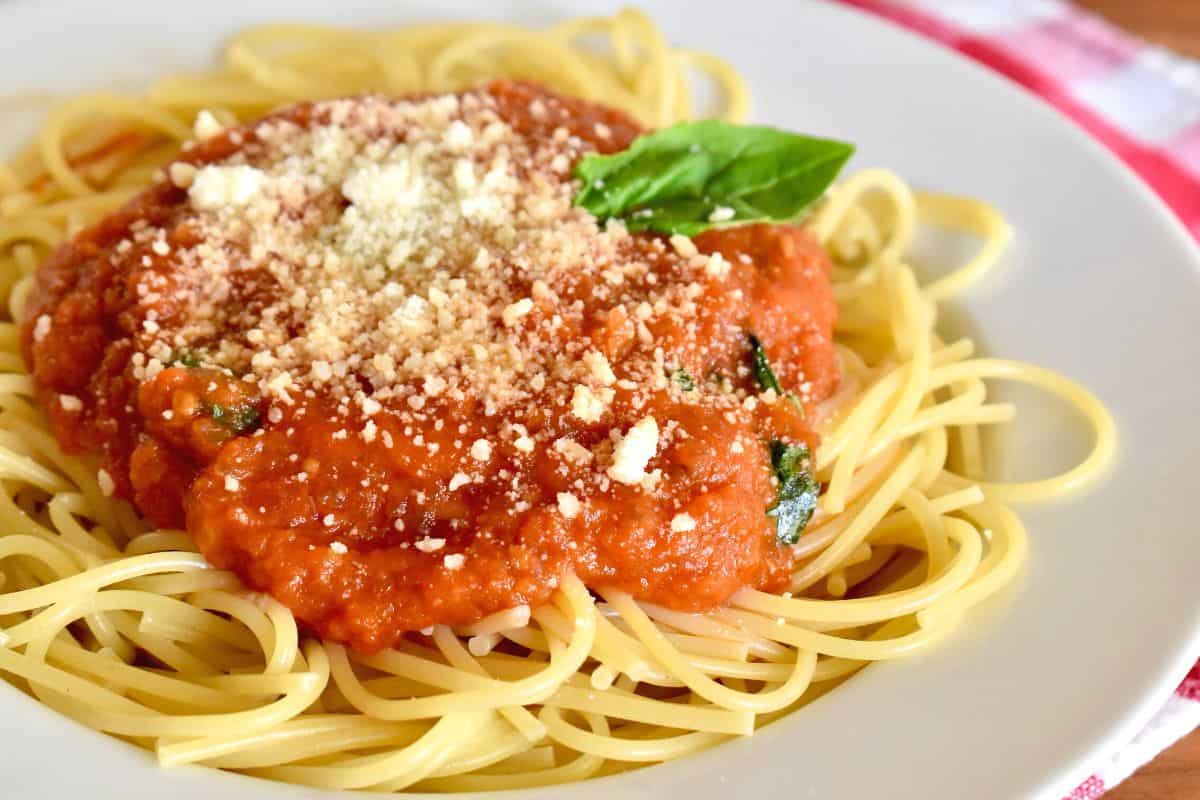
Recipe Tips
- Use a good quality olive oil.
- Dice the onions small so they melt in with the sauce rather than leaving it chunky.
- The garlic is only to add a bit of flavor to the olive oil and onions. Don’t use minced garlic here, instead smash the whole cloves and remove them after 2-3 minutes.
- Whole San Marzano canned tomatoes are ideal in this sauce.
- Red wine is optional and not used in traditional Sugo di Pomodoro. I like to use it because it seems to intensify the flavors of the tomatoes.
- Sugar is another optional ingredient. It’s how I’ve always made my sauce and the small addition really helps with the acidity of the tomatoes.
- The longer the sauce simmers, the better it becomes. You can always shorten the cooking time if needed.
- Fresh basil is best in this recipe. Just tear the leaves into the sauce or keep them whole.
- Store leftover Sugo in an airtight container in the refrigerator for up to two weeks, or freeze for up to three months.
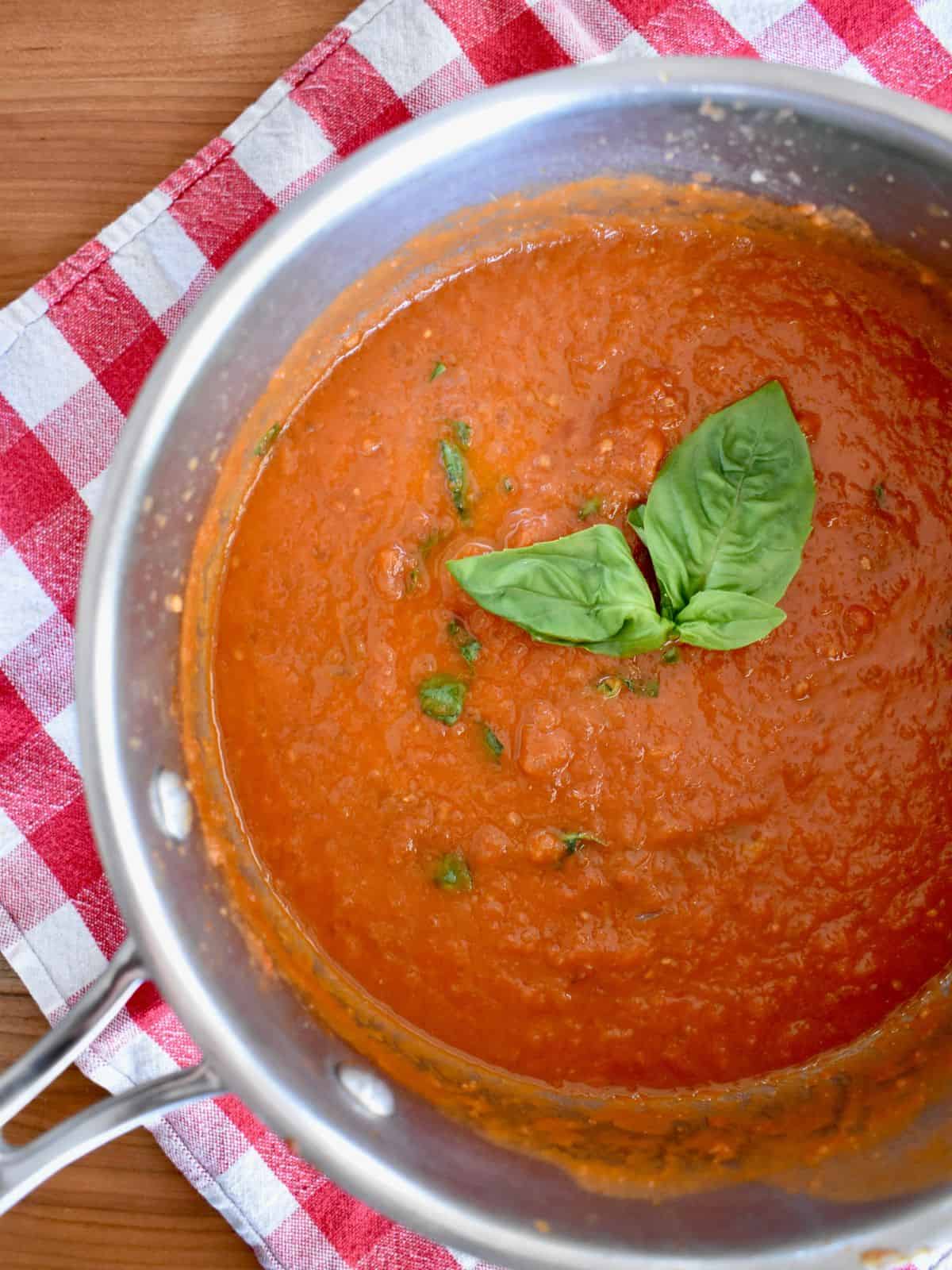
Frequently Asked Questions
Sugo is the Italian word for “sauce” and it most commonly refers to sugo di pomodoro which is a tomato-based sauce using just a few ingredients.
Sugo is not the same as traditional marinara sauce. Marinara is made with spices like oregano and thyme, and contains garlic and sometimes flavorings like anchovies or capers. Sugo, instead is made with just a few ingredients, no spices, and focuses on the tomato flavor of the sauce.
Passata is strained or sieved tomatoes often sold in glass bottles. On the other hand, sugo is a sauce made out of whole tomatoes that is simmered low and slow to a thicker consistency. Passata is often used to make sugo.
Traditional sugo is made with just olive oil, onions, San Marzano tomatoes, and basil. The sauce is cooked low and slow to thicken and intensify the flavors of the tomatoes.
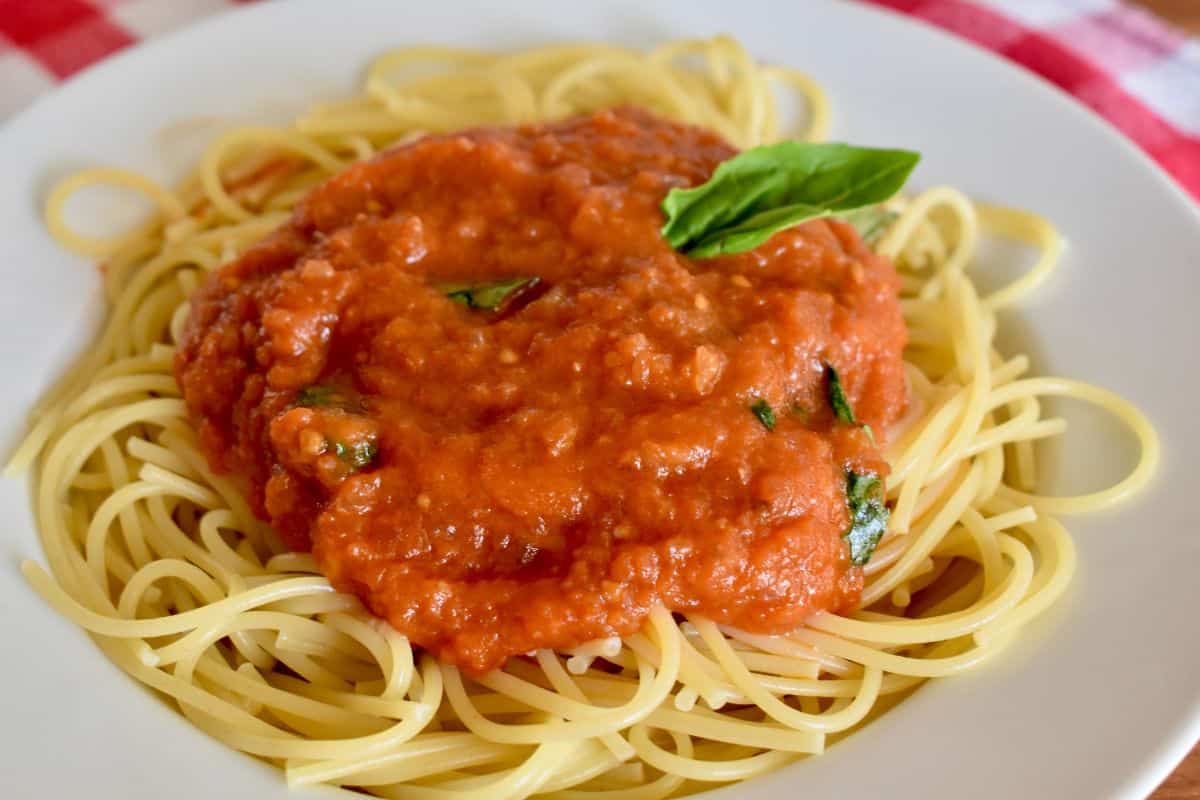
More Traditional Italian Recipes!
Love this recipe? Please leave a 5-star rating in the recipe card below and/or review in the comments section further down the page.
Love this recipe? Please leave a 5-star rating in the recipe card below and/or review in the comments section further down the page.
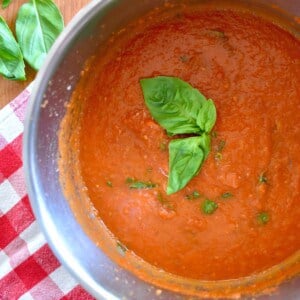
Sugo Recipe
Equipment
- medium saucepan
- kitchen shears
- immersion blender
Ingredients
- 2 tablespoons olive oil
- 1 small onion, diced
- 3 cloves garlic, smashed (not minced)
- 28 ounce can San Marzano tomatoes, whole
- ½ cup red wine (optional)
- 1 teaspoon granulated sugar (optional)
- ¼ cup fresh basil leaves
- kosher salt to taste
Instructions
- Add the olive oil to a saucepan over medium heat. When the oil gets warm, add in the diced onion and cook for 2-3 minutes until it starts to soften.
- To the pot, add in the smashed garlic cloves. Let the garlic sweat with the onions for 2 minutes, then remove the garlic from the pot and discard.
- Pour in the San Marzano tomatoes and red wine, if using. Bring to a low simmer and cover, stirring occasionally, for 20 minutes. Remove the lid cut the tomatoes in half using kitchen shears or a knife. Add in sugar, if using, and continue to cook for 30-40 minutes until sauce has thickened.
- Turn off the heat and use an immersion blender to crush the tomatoes. Add in the torn basil leaves. Taste for seasonings and add in kosher salt if needed. Serve immediately or refrigerate for later.
Notes
- Use a good quality olive oil.
- Dice the onions small so they melt in with the sauce rather than leaving it chunky.
- The garlic is only to add a bit of flavor to the olive oil and onions. Don’t use minced garlic here, instead smash the whole cloves and remove them after 2-3 minutes.
- Whole San Marzano canned tomatoes are ideal in this sauce.
- Red wine is optional and not used in traditional Sugo di Pomodoro. I like to use it because it seems to intensify the flavors of the tomatoes.
- Sugar is another optional ingredient. It’s how I’ve always made my sauce and the small addition really helps with the acidity of the tomatoes.
- Kitchen shears are helpful to cut the tomatoes in half. You can also use a knife.
- The longer the sauce simmers, the better it becomes. You can always shorten the cooking time if needed.
- An immersion blender is an easy way to blend the sauce while in the pot. You can always use a blender instead.
- Fresh basil is best in this recipe. Just tear the leaves into the sauce or keep them whole.
- Leftover sugo can be stored in an airtight container in the refrigerator for up to two weeks, or frozen for up to three months.




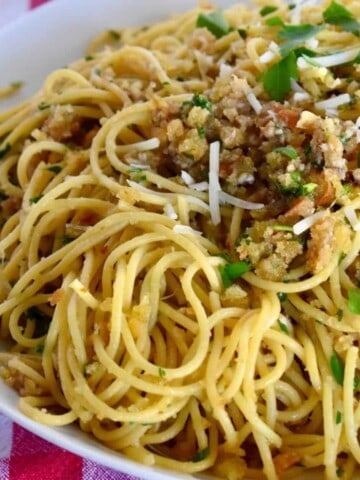


When I work with San Marzano tomatoes, I tediously remove seeds. I didn’t see that process in your instructions. Do you remove seeds?
I don’t
Thank you for this recipe, it worked out perfectly – and I have also tried it with little additions such as olives or capers, whatever I’ve had extra on hand (or craving…).
Interesting content. I’m glad I found this page. I’m going to save it so I can read any more upcoming posts.
Going to give it a try
Hope you love it!
This sounds delicious! I can’t wait to try it!
You’re going to love it!